We hear in the mass media every day about the epidemics of AIDS, drug abuse, gang violence, domestic violence, poverty, and the death and human misery that these problems cause. There is one social ill of equally damaging proportions that society has so far refused to acknowledge: The sexual abuse of boys. It is well documented that as many as 1 of 3 girls is sexually abused before she reaches 16 ; what is still not widely known by the public and much of the psychiatric community is that as many as 1 in 5 boys are sexually abused before he reaches 16. This statistic was quoted from Matthew Parynik Mendel's book "The Male Survivor: The Impact of Sexual Abuse." The sexual abuse of boys, and of children in general, knows no economic, social, cultural or geographic boundaries. A major contributor to the problem is the prevailing shroud of myths that muddy the issue and allow perpetrators to continue their actions unabated. Some common myths include: "only men are sexual predators," "boys are not harmed by sexual contact if it is by a woman," "boys want such contact if it is by a woman," and "if a boy is sexually abused, it is because he wanted it or asked for it." As long as society clings to these and other commonly held mistaken beliefs, boys, men, their families, and society as a whole will continue to suffer.
Let's look at some real facts:
1) If a boy under 18 is approached by an adult of either gender for sex, it is considered to be sexual abuse because of the age, and, therefore, perceived power differential between child and adult.
2) Sexual assault of boys by females - whether they be mothers, sisters, grandmothers, or other women - is grossly underreported. In his book "Abused Boys: The Neglected Victims of Sexual Abuse," psychologist and therapist Mic Hunter stated that "women account for 20% of the [sexual] abuse of boys."
3) Boys are harmed by having sexual contact with an adult of either gender. It causes psychological trauma and pain, as does any other form of assault. Loss of self-esteem, shame, guilt and Post Traumatic Stress Disorder (PTSD) are but a few of the consequences, according to Hunter, who deals with many male victims of childhood sexual abuse.
4) A little-known fact is that the sexual arousal that results from fondling or stroking a prepubescent boy's genitals rapidly produces extreme pain, since he is incapable at that age of reaching an orgasm. Thus "fondling a boy's genitals is in itself sexual torture," said one pastoral counselor who wished to remain unnamed.
5) Children do not ask for or want sexual contact under normal circumstances. Even in the unlikely event that they were to invite such contact, it is the adult's responsibility and obligation to refuse - as it is the adult who has the power in the relationship and is supposed to have mature judgment.
6) Sexual assaults on boys tend to be more violent and are more likely to result in serious physical injury or death than those perpetrated on females, according to N. Ellerstein and J. Canavan in their March 1980 article featured in "The American Journal of Diseases of Children."
7) Men who were sexually abused as children are twice as likely to become substance abusers, commit suicide, be prone to illness, have problems in school, be antisocial or overly aggressive, and be verbally or physically abusive to their mates.
8) Ironically, only a small percentage of men abused as boys become pedophiles, said Hunter. However, an overwhelming percentage of pedophiles of either gender were sexually abused as children.
9) Because adults generally occupy positions of trust with children, any breach of that boundary is a breach of trust and an emotional abandonment, as well as an act of sexual assault.
10) Incest can occur on either emotional or physical levels, or both. Incest is defined as inappropriate sexualization of the relationship between a child and an adult entrusted with his care. Under this definition, sexual misconduct by teachers, ministers, or day care workers is also considered as incest.
11) Hunter also debunks the myth that all men who sexually abuse boys are homosexuals, commenting that many are heterosexuals who are not at all interested in sexual contact with other grown men, and that many pedophiles who abuse boys also abuse girls. Likewise most homosexuals are not pedophiles.
Because of the culture that exists in much of the world, men have additional constraints that impede their ability to cope with the aftermath of sexual abuse. Men are expected to be "macho," to not feel sadness, to "always be in control," to not under any circumstances be vulnerable. Males are also expected to be dominant in any sexual situation; to be otherwise is an affront to the idea of the male as the "stronger vessel," the protector of women". Thus, to be male and a victim of rape or molestation poses issues that most people refuse to deal with.
With these circumstances, men and boys who have been in any way sexually abused do not get the support and help that women have come to take for granted in the last two decades. Without the proper emotional support and validation to help them work through their feelings, many boys and men find less healthy ways of coping.
Older abused boys and men are more likely to act out violently, abuse alcohol or drugs, become sexually promiscuous, perhaps even commit rape or murder, in order to regain a feeling of control or power over their bodies and their lives. These factors are exacerbated by fears of being thought of as effeminate or homosexual because of the experience. "I didn't want to talk about it [the abuse], because I was afraid that people would think I'm gay or that I molest kids" said Charles, an incest survivor.
Younger boys will often become bullies at school or on the playground, perform poorly at school, be socially withdrawn, lose their appetite, perhaps revert to earlier behaviors such as bedwetting. In some, the perceived loss of personal power is so complete that they themselves become the targets of bullies and/or further sexual predation. The tremendous loss of self-esteem, as well as the violation of trust, can and does cause an inability for the person to form intimate bonds with others from that point forward. This causes innumerable problems with work, social, and romantic relationships, as Hunter and many other therapists have commented.
One only needs to look in the hospitals, women's shelters, courts, and the prison system to see the human toll that sexual abuse of boys has taken on society. The good news is that there are steps that we as a society can take to deal with these problems and lessen their impact on all parties involved.
There are several factors that contribute to the epidemic of sexual abuse of boys and of children in general. Perhaps the single largest contributor is secrecy - secrecy within families, schools, daycare facilities, churches, and other organizations, as well as secrecy maintained by witnesses of the abuse and by the victims themselves. Perpetrators will not tell others of their actions for obvious reasons. They often resort to threatening victims with violence, warning them that if they ever tell, they or their families and pets will be hurt or killed. Other normally responsible people who witness such abuse often don't tell because they're worried about the stigma that such a scandal will bring to the family or organization involved, or are afraid that authorities won't properly handle the situation. Witnesses who tell and don't get the needed assistance are themselves subject to harassment, violence, or ostracism. They will usually have to live with a situation long after police and other authorities have dropped the matter. Statistics published in 1992 and 1994 by the U.S. Department of Justice show that only 52% of rapes are reported, that one of two rape victims is under 18, and that one in six is under 12 years of age. Victims don't talk for any number of reasons:
1) A deep sense of shame over what has happened. One survivor said "I felt non-human, like trash. I felt like I was somehow responsible, and that I didn't deserve to go on living."
2) Fears of revenge by the perpetrator and of ostracism by friends and family. "Some families are so sick and codependent that they will actually blame the child for the actions of an adult who molested him," according to Sandy Poupenei, a marriage and family therapist.
3) Dissociation. This is a process that the mind uses to escape an unavoidable and intolerably painful situation. According to Rachel Downing, M.S.W., L.C.S.W., of the Sidran Traumatic Stress Foundation, "Dissociation is a complex mental process during which there is a change in a person's consciousness which disturbs the normally connected functions of identity, memory, thoughts, feelings and experiences..." In other words, when a person dissociates during abuse, he may not consciously remember what happened. Obviously, one cannot report abuse that one does not remember clearly, or at all. It should be noted that just because a person has dissociated and cannot consciously remember part or all of an event, it does not mean that he is unaffected by the abuse. Indeed, this scenario is worse than a nondissociative case, because the victim's lack of conscious awareness impedes recovery, according to experts on dissociative disorders.
On reading the report entitled "What are traumatic memories?" by Rachel Downing of the Sidran Traumatic Stress Foundation, one can justifiably conclude that if the person dissociated during the experience, then that shows that what happened was extremely traumatic. Until all the secrecy and cover-up is removed, sexual abuse of boys and the resulting consequences will continue unabated.
There are several actions that if taken may help to mitigate this problem. They are as follows:
1) Educate the public and dispel the myths that continue to interfere with the appropriate handling of this issue. Until people understand the true nature and scope of the problem, they will not be motivated or able to help.
2) Provide counseling support services specifically for men and boys who have been abused or assaulted. Early intervention of the right kind speeds recovery and lessens the damaging effects of abuse. Hunter stressed that those with strong support networks fare much better in their recovery than ones who are isolated emotionally.
3) Enact legislation that would provide the same legal consequences for rape of males and females. Some jurisdictions don't recognize sexual assault of a male as rape.
4) Train law enforcement officers, counselors, teachers and clergy to recognize male victims of sexual abuse and how to handle such cases.
5) Parents should educate themselves about the signs and symptoms of abuse. This will help to alert them if their child is being harmed in a school, daycare, church, friends' or neighbors' homes, or in any other setting where they may not be able to accompany him.
6) Male victims need to become more vocal, and, when possible, form advocacy groups for mutual support and to educate others about sexual abuse and recovery issues.
Clearly, we as a society cannot afford to ignore this issue any longer. The costs of not dealing effectively with the recovery needs of victims and of not taking steps to prevent more abuse are too high to bear. Many people want to avoid any discussion regarding the sexual abuse of boys, finding it too uncomfortable, possibly because it shatters too many cherished beliefs. Regardless of whether people want to hear it, this is one secret that begs to be told.
In past reports on abuse between the sexes (domestic violence, date rape, sexual harassment, etc.), if men represent the majority of abusers, the articles were sure to point that out. Sharon Jayson's article was curious in that no statistics were broken down by gender. Does this mean that there was a balance of abuse, or was it that, like child maltreatment, women were the primary abusers?
20/20 reported a few months back just how vicious teenage girls can be, especially in this technological age. Web sites are flooded with cellphone images of girls' violence on school grounds and elsewhere. And, I forget what woman said "If you don't think girls are viciousness, you didn't go to high school."
Both in the article and at LoveIsRespect.org, the only anecdotal examples showed women as victims. Canadian professor David Wolfe went on to state "Girls don't recognize an abusive situation." I've got to believe that if most boys and men realize that constant put-downs, extreme jealousy, explosive temper, big mood swings, possessiveness, and telling you what to do is abuse, they either dismiss it or are too embarrassed to say anything about it and just take it.
Hopefully the press will start presenting a balanced perspective on child maltreatment so that there will be male friendly services that encourage boys and men to report abuse and get the support they need, and, in turn, the women who are the perpetrators will get the help they need.
Gordon Clay
Controversial Report Explores Male Victims of Violence
The abuse of boys and male teenagers is the subject of a report issued by Health Canada. Entitled "The Invisible Boy: Revisioning the Victimization of Male Children and Teens," the report summarizes studies showing that 14-32% of North American adult males have been sexually abused at least once in their lives.
The report, written by Frederick Mathews, PhD, is controversial because it highlights the problem of the gender double standard, which it describes as "the invisibility and normalization of violence and abuse toward boys and young men in our society."
The document advocates a "male-inclusive" perspective on violence and victimization which overcomes the current tendency to minimize or render invisible the existence of male victims. The report notes, "Male victims report great pain, frustration, and some anger at not seeing their stories reflected in the public discourse on violence and abuse....They feel many writers and thinkers in the field have delineated the boundaries of the discourse on violence and abuse -- boundaries that leave males out."
The report goes on to explain the reasons for the invisibility of the male victim: "Much of the current thinking and discourse, both public and professional, about abuse and interpersonal violence is based on a woman-centered point of view....Because of this image of perpetrators as having a male face, violence in our society has become 'masculinized' and is blamed exclusively on 'men' and 'male socialization.' Although there is without question a male gender dimension to many forms of violence, especially sexual violence, simple theories of male socialization are inadequate to explain why the vast majority of males are not violent."
Source: www.hc-sc.gc.ca/hppb/familyviolence/pdfs/invisib.pdf ![]()
1998 report presented at the American Psychological Association's annual meeting in San Francisco today. The report states that 1 in 10 girls and 1 in 20 boys report being raped or abused on a date. Most dangerous states are Georgia, Texas and Idaho. Reported on CNN.




































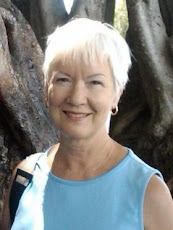

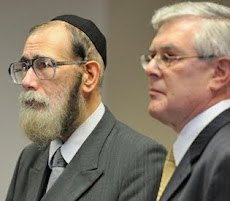

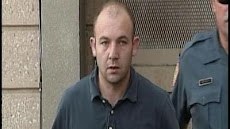









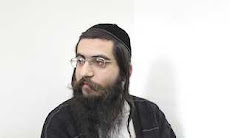





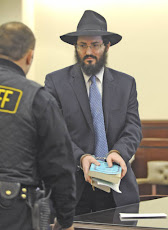



















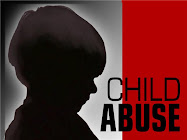













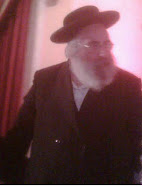











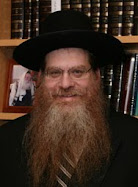












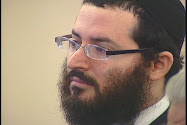
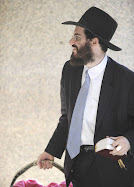
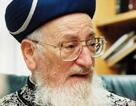









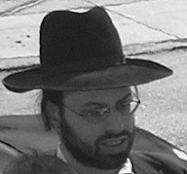











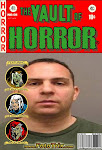












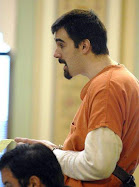


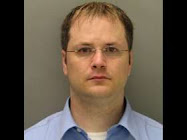


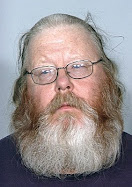

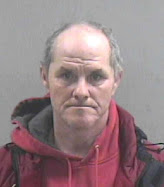
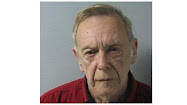
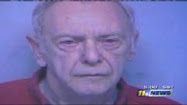













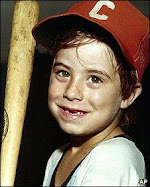

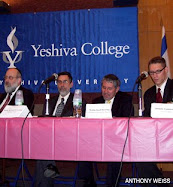

















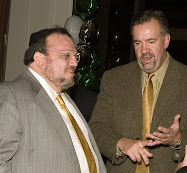
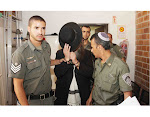



















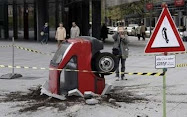











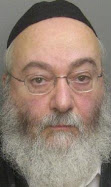












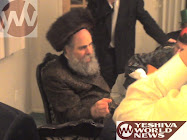









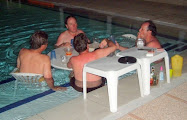

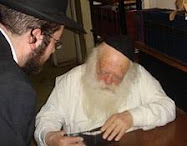


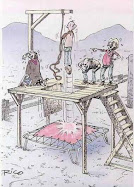
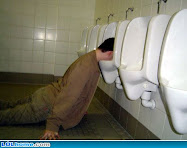



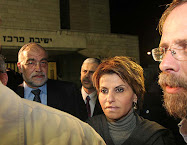
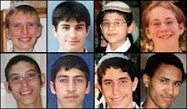
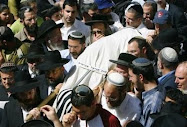
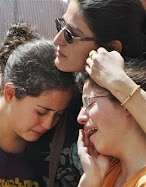
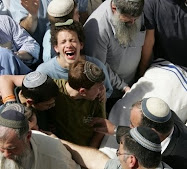
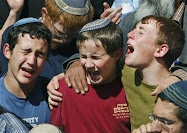

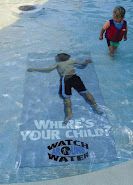

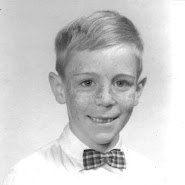







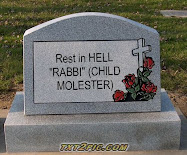
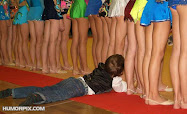







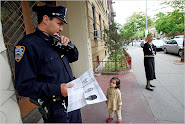

















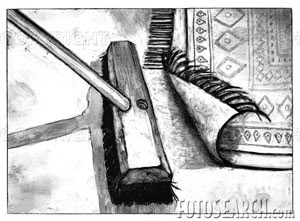
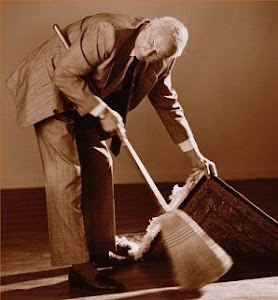













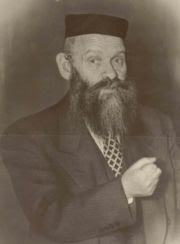




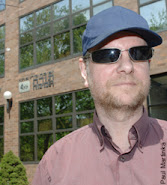


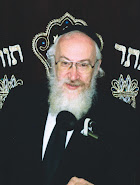







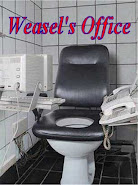






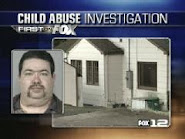
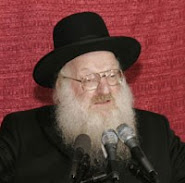






















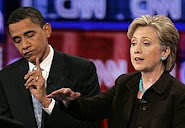


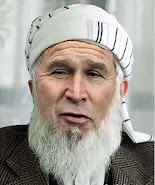












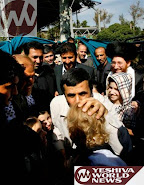
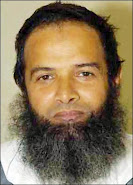


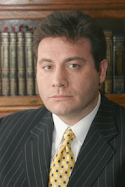


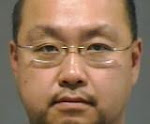
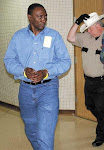

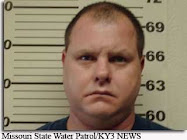



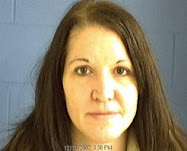
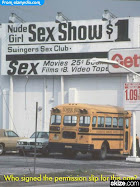

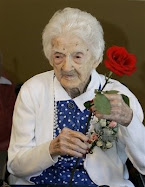
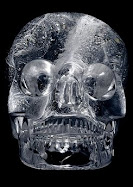
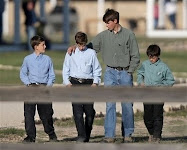



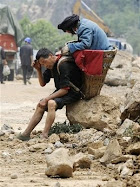



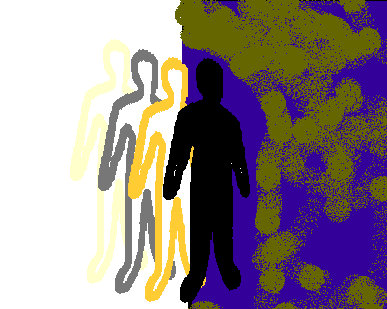

3 comments:
Definitions of Abuse
Let's look at the five main definitions of abuse, emotional, intellectual, physical, sexual and spiritual, derived primarily from within the Recovery community.
* Emotional: Major caregiver refuses to let child express feelings, shames a child for his/her feelings or demonstrates improper expression of his/her feelings in front of the child. Denying noncustodial parent unencumbered visitation. (Book.)
* Intellectual: Attacks on the child's thinking process, over-control of the expression of the child's thoughts and failure on the part of the major caregiver to teach logical thinking and problem solving.
* Physical: includes abject, use of implements, face slapping, shaking, hair pulling, head banging, tickling into hysteria, lack of appropriate physical nurturing and intrusive procedures. Request for information on services: for men battered by men; men battered by women, for male batterers and for female batterers. See the issue of Abuse - Physical and Domestic Violence and resources for Alternatives to Violence".
* Sexual: "Physical sexual" involving intercourse, oral sex, anal sex, masturbation of the child, having a child masturbate an adult, sexual touching (fondling), sexual kissing and sexual hugging; "overt/explicit" involving voyeurism or exhibitionism; "covert" involving verbal sexual abuse or lack of appropriate boundary setting with the child; "Emotional sexual" involving emotional enmeshment by the parent, child witness to sexual abuse or not providing appropriate and healthy sexuality information Request information on services: men molested as children; men incested as children; men raped as children or adults (by a male; by a female); women molested as children; women incested as children; women raped as children or adults (by a male; by a female); partners of male incest/molestation survivors; partners of female incest/molestation survivors. See Issues on Incest & Molestation, and Sexual Abuse.
* Spiritual: Major caregiver disrespectful of child's reality and demands to be the child's Higher Power; perfection demanded of the child; child is over controlled; child is ignored, neglected or abandoned; child is indulged; religious addiction of the major caregiver; abuse at the hands of a religious caregiver; major caregiver does not follow stated family rules or values; and shifting rules or hidden rules in the family. Request information on services for people ritually abused as a child (including circumcision). See Issues on Ritual Abuse and Circumcision.
We all probably have one or more examples of at least one of these in our lives.
Breakdown of Substantiated Cases of Child Abuse
The following breaks down the percent of substantiated cases of child abuse and neglect but type - 1993 NCPCA Annual Survey
* Neglect - 47%
* Physical abuse - 25%
* Sexual Abuse - 15%
* Emotional Abuse - 4%
* Other - 10%
Protecting Children from Abuse & Neglect
On December 15, 1997, the cover of People magazine showed the solemn and frightened face of a two-year-old named Peter who was on his way to a New York City shelter after violence broke out in his home. The article inside the magazine, called "A Day in the Life," was unusual in its approach to the emotional issue of child abuse. Rather than give a wrenching account of Peter's experiences, it focused on the unseen adult holding Peter's hand - on of the child protection caseworkers described here as "the last line of defense for America's children." Responding to calls from doctors, police, teachers and grandparents who believe a child has been mistreated, not to mention parents who are misrepresenting the situation to get back at their former partner, caseworkers knock on doors, ask personal questions, look inside refrigerators, and check children's bodies for bruises and burn marks. They have the power to take children temporarily from their homes and parents, if the risk of harm appears severe. They also have the discretion to determine that nothing serious happened, or that it is safe for the child to remain home while the parents are urged to change. The stakes are high. Overestimating the degree of danger could needlessly shatter a family and rupture the child's closest relationships. (Over 2 million or the 3 million cases reported each year are unsubstantiated and dropped). Underestimating the danger could mean suffering or even death. The decisions caseworkers make every day would challenge King Solomon, yet most of them lack Solomon's wisdom, few enjoy his credibility with the public, and none command his resources.
The nation's fight against the heartbreaking problem of child abuse and neglect is led not by Solomon but by child protective services (CPS), the government agency that employs the caseworkers described above and that is changed with investigating and responding to allegations of child abuse and neglect. Child protection is a function of state government that is ruled by state law but supported by significant federal funding and - in many states - carried out by local government entities. For simplicity, the generic term "CPS" is used here to refer to these varied state and local agencies.
Compared to the schools that most of us attended and to the police departments we see in our communities and on TV dramas, CPS is a mysterious agency. We know it is there to tackle the "national nightmare" of child abuse and neglect that most of us cannot bear to think about. Few of us want to know the details. But without public attention to those details, there cannot be a consensus on the expectations, boundaries, powers or budgets that should frame government efforts to protect children from harm by their parents or caretakers.
The flurry of recent reports indicate that CPS is overmatched by the scope and complexity of its task. The spread of substance abuse among parents, rates of family breakup, deepening pockets of poverty, and cuts in government services have intensified family problems and reduced options for helping. In 1995, nearly 3 million children were reported to CPS as possible victims of child abuse or neglect - triple the number of reports made just 20 years ago. CPS has the dubious distinction of being among the most maligned public agencies. In 1991, the National Commission on Children charged: "If the nation had deliberately designed a system that would frustrate the professionals who staff it, anger the public who finance it, and abandon the children who depend on it, it could not have done a better job than the present child welfare system."
Expected to straddle two core values of U.S. society - the protection of children and respect for the privacy of the family - CPS is accused of both "unwarranted interference in private life" and "irresponsible inaction" when children are truly threatened. It is called incompetent, "confused, mismanaged, and staffed with untrained workers." An inadequate knowledge base undermines the actions of its staff. But, because children's lives are at stake, CPS cannot stop its work while the public debates its mission, or while researchers discover which interventions might help which families. This plane must be fixed while it flies through the air.
There are no easy or inexpensive answers to any of the questions. Instead, the path toward more effective protection for children will require public debate over appropriate societal goals related to child maltreatment. It will demand a new emphasis within CPS on prioritizing, decision making, and creating partnerships with service providers. It will require an ongoing commitment to capacity building and practical research. And it will take significant government resources to create and sustain a safety net for poor families and a service system for troubled families.
Snippets on Child Abuse & Neglect
* In 1877, New York State passed a law to punish wrongs done to children, giving anticruelty societies a mandate to identify children who were being mistreated by their families.
* Children of the "unworthy poor" were saved from developing slothful ways by separation from their parents through indenture or placement in institutions.
* Reports of child maltreatment grew exponentially: Between 1976 and 1993, the number of children officially reported as abused or neglected rose by more than 347%
* A CPS staff member must draw conclusions regarding the validity of the allegations, the identity of the perpetrator, and the condition of all the children in the home.
* Common resources tapped by caseworkers are emergency medical services, domestic violence shelters, substance-abuse treatment, emergency housing, mental health evaluation, child care, and ongoing counseling.
* Two essential ingredients justify intervention in the lives of families: a child is in need of protection, and the parents or caretakers are unwilling or unable to provide that protection.
* A 1995 Gallup Poll of 1,000 parents yielded the estimate that 3 million U.S. children were victims of physical abuse by their parents, or about 44 per 1,000 children.
* The National Incidence Study found that neglect is by far the most common form of maltreatment, harming an estimated 879,000 children in 1993.
* Current estimates indicate that between 50 and 80$ of families involved with child protective services are dealing with a substance-abuse problem.
* As they get older; children who have been abused and neglected are more likely to perform poorly in school; to commit crimes; and to experience emotional problems, sexual problems, and alcohol/substance abuse.
* Service funding is fragmented and inadequate; access to services is limited; programs emphasize problems rather than family strengths; and interventions seldom focus on the family as a unit.
* In 1993, legislation was passed that earmarked federal funds specifically for family support services and increased the funds available for family preservation services (Public Law 103-66). This was a major achievement because it designated a specific federal funding stream to support family-centered services.
* Not every family can or should be preserved; children must be removed when families cannot assure their safety.
* The limited evidence available suggests that family support programs have inconsistent effects both on children's development and on family functioning.
* Intensive family preservation workers usually carry caseloads of only two to six families, see families from 4 to 20 hours per week, and can be reached by the family 24 hours per day.
* Accurate risk-assessment techniques are needed to identify the cases in which chidden cannot be protected in their homes and in which out-of-home placement is clearly warranted.
* Better data collection systems could connect assessment information, intervention, and service experiences with family and child outcomes, to learn which families do best with which services over time.
* From 1986 to 1989, the foster care caseload in New York State grew from 18793 to 47145 and in Illinois the foster care caseload more than doubled from 1986 to 1992.
* To safeguard children in out-of-home care, better screening, training and education for caregivers may be needed prior to placement, even when the children are going to live with family.
* Informal kinship care - life-in, daily care provided by relatives outside of the child welfare system - is provided to about 1.8 million children in the US today, or 2.2% of the child population.
* Analysis of a California data set show that, after two years, 43% of children from kin placements and 50% of the chidden from foster care placements had returned home.
* Many kinship caregivers are reluctant to consider adoption, since they reject the notion of terminating the parental rights of their relatives, and argue that they are already "family" to the child.
* In 1995, New York spent $111.94 per capita for child welfare services, while Georgia spent only $11.81 per capita.
* The foster care payment and adoption assistance programs provide the only uncapped funding for child welfare services, in which reimbursements to states rise and fall with demand.
* The incidence of abuse and neglect is approximately 22 times higher among families with incomes below $15,000 per year than among families with incomes of more than $30,000 per year.
* At the same time as pressures on the child welfare system are likely to increase, fewer federal funds will be available to support child welfare services - other than out-of-home care.
* Work-based public assistance programs can function as part of a comprehensive web of supports for families and children, and complement the functioning of the child welfare system.
* The goals of welfare reform, which is focused on adult self-sufficiency, compete with the goals of the child welfare system, which focuses on safe, nurturing child rearing.
* More than 70% of reported cases are closed by the end of the investigation because the report was screened out by the hot line or the investigator recommended closing the case.
* CPS agencies tend to prescribe specific procedures that must be followed in each case rather than encouraging a customized approach that takes into account the differing needs of families.
* At the end point of the reforms, it is envisioned that CPS, in partnership with the criminal justice system and other agencies, will respond more effectively to protect children in the highest-risk cases of abuse or neglect.
* In Missouri and Florida, CPS agencies limit authoritative investigations to the most serious cases of suspected abuse or neglect, and provide assessment- and service-oriented responses to other families.
* Since 1994, across the five Missouri reform sites, 80% of the cases have been referred to the assessment track and only 20% to the investigation track.
* If CPS shares responsibility for child protection with community partners, does it also share accountability when things go wrong?
* Reformers will have to devise new ways to track accountability. Child protection is a very high-risk business, and society's demands of the child protection system are high as well.
* To make sure that caseworkers are capable of exercising these new responsibilities, agencies undertaking reform will have to provide more staff training, upgrade caseworker job requirements and pay scales, and consider reducing caseloads.
* Poor children, because they are less likely than their wealthier peers to receive dental services, are at the highest risk of suffering the pain and consequences of untreated dental disease.
* By at 17, almost 80% of youths will have experienced at least one episode of tooth decay, making this form of disease one of the most commonly experienced.
* A small proportion of children experienced a disproportionate share of dental disease. Some 80% of all cases were found in just 25% of 5 to 17-year-olds.
* A shortage of dentists who will accept Medicaid patients is one of the most frequently cited reasons for states' failure to deliver EPSDT dental services to poor children.
Source: The Future of Children, a publication of the Center for the Future of Children, The David and Lucile Packard Foundation. See also "Maltreatment".
The Story of the Blue Ribbon
Bonnie Finney, of Norfolk, VA took a stand against child abuse after the death of her grandson in 1989. He was found in a weighted tool box, at the bottom of a swamp, three months after he was killed.
Bonnie tied a symbolic blue ribbon to her van as a signal to her community to involve everyone in the battle to stop child abuse.
She chose the Blue Ribbon to symbolize the bruised and battered bodies of her grandchildren.
Today, the Blue Ribbon is recognized as a national symbol of child abuse awareness. Tie a blue ribbon to your car antenna, on your book bag, or display it at your workplace as a reminder that child abuse can be prevented.
Things You Can Do to Prevent Child Abuse
Help a friend, neighbor or relative. Caring for children can sometimes be stressful. Offering a helping hand can provide relief.
Help yourself. Take time out. Don't take it out on your kid. Take a deep breath. Know who to call for help, and keep the numbers next to the phone.
When baby cries...Learn what to do if your baby won't stop crying. Never shake a baby - shaking a baby may result in severe injury or death.
Call Child Protective Services (or talk to your therapist, lawyer, health care professional, etc.) if you suspect abuse. The number is on the inside cover of your yellow pages if you suspect abuse. It often happens in public, almost daily in your local grocery store.
For more information, call 1.800.CHILDREN (244.5373)
Newsbytes
How Harmful is Childhood Trauma?
“Children are resilient, right?” Though children can often successfully bounce back from emotional trauma, certain conditions strongly influence the extent of the emotional damage.
Source: www.impactpublishers.com/pressrel/How%20Harmful%20is%20Childhood%20Trauma.htm
Psychological, Physical Abuse Equally Harmful To Health
Abuse by an intimate partner can have serious immediate and long-term health consequences for both men and women, according to a new, large-scale study. And that abuse does not need to be physical or sexual to be harmful.
Source: enter for the Advancement of Health, www.intelihealth.com/IH/ihtIH/EMIHC000/333/333/357258.html
Childhood Sexual Abuse in the Jewish Community
The history of the Jewish People is one filled with a series of traumatic experiences. This includes one topic that up until now has been taboo to discuss: Childhood Sexual Abuse.
Contrary to what we might want to assume, childhood sexual abuse is not limited to the gentile population. It is also a Jewish issue, and one that needs to be addressed. In the United States one of every three to five women, and one out of every five to seven men have been sexually abused by the time they reach their eighteenth birthday (Editor: Not counting circumcision.). Unfortunately, due to the fact there has been little research on this issue in the Jewish Community, we don’t know how prevalent it is. Most mental health providers around the world who are based in Jewish Communities, will admit that they have survivors (of childhood sexual abuse) of Jewish origins as part of their caseload.
One of the major problems in discussing the issue of Childhood Sexual Abuse in the Jewish Community, is that doing so threatens the cultural perception of the wholesomeness of the Jewish family. The time has come to break the taboo and allow the Jewish Community to face reality and to begin the healing journey. While this process is taking place, we will also be able to compile valuable statistics on the prevalence of childhood sexual abuse in our community. It is important to note that when we refer to the Jewish Community, we are including everyone from the unaffiliated, Reform, Conservative, through the Orthodox, "Charedi" and "Chasidic" communities.
It may be surprising that despite Israel’s world-leading status in treatment of Post Traumatic Stress, the study of childhood sexual abuse in Jewish Communities around the world is still in its infancy. Over the past two years I've been working with years Na'ama Yehuda (of New York). Our dream is to create an international organization to address the issue of childhood sexual abuse in Jewish Communities international.
As you might have noticed, the first phase has already begun, by the updating of my web page for Jewish Survivors of Childhood Trauma and Domestic Violence. hometown.aol.com/vickipolin/Page26.html
The goal is to develop an International data base/web page. The second phase will be to develop and implement an international conference on childhood sexual abuse. The third phase would be developing a treatment center and on going educational programming in Israel, the United States, and throughout the world. Our long term goals is to have network of researchers, development self-help groups and an international speakers bureau. If you are interested in joining forces, please contact me at: VickiPolin@aol.com
Catholics more obsessive?
People who are devout Roman Catholics are more likely to show signs of obsessive-compulsive disorder, an Italian study has suggested. Researchers at the University of Parma found that Catholics are more likely to engage in ritual behaviour than non-Catholics, and devout Catholics the most. Lynne Drummond, a consultant psychiatrist at St George's Hospital in London said many patients with obsessive-compulsive disorder said they had had a strict upbringing.
Source: London Daily Telegraph
Mom Strips for Her 10-Year Old Daughter's Birthday Party Guests
Some moms hire a clown or magician for their 10-year-old daughter's birthday party. But Melissa Balkcom allegedly opted for a lewd version of "Truth or Dare" and, as an added bonus, performed a bunch of naked jumping jacks for her young guests. Honest, we don't make this stuff up.
Source: www.thesmokinggun.com/archive/balkcom1.html
Stop Being a Victim
If you are experiencing abuse from a loved one, empower yourself with information to stop being a victim.
Source: www.intelihealth.com/IH/ihtIH/WSIHW000/9273/9348.html
Sexual abuse in girls leads to later substance abuse
Young girls who are forced to have sex are three times more likely to develop psychiatric disorders or abuse alcohol and drugs in adulthood, than girls who are not sexually abused, researchers report.
The study, which involved more than 1,400 adult female twins, found that the sibling who was abused had a consistently higher risk of psychiatric disorders, such as depression and bulimia, despite being raised in the same family and having the same genetic makeup as her sister.
"These results strongly suggest that...childhood sexual abuse and subsequent psychological disorders and substance abuse is indeed causal," Dr. Kenneth S. Kendler, the study's lead author, told Reuters Health in an interview.
Kendler and colleagues, from the Medical College of Virginia Commonwealth University in Richmond, examined the psychological impact of different types of childhood sexual abuse ranging from exposure and sexual suggestions to unwanted intercourse. Their findings are published in the October issue of the Archives of General Psychiatry.
In the study, women had psychiatric evaluations and answered detailed questions about their sexual experiences as children. The women's parents were asked about their history of psychiatric disorders and their relationships with family members.
Just over 30% of women reported some form of childhood sexual abuse, with 8.4% reporting that they had unwanted intercourse. These women had the greatest risk of being diagnosed with a psychiatric disorder or substance abuse problem, results show.
"The strongest association was confined to those exposed to the most severe forms of sexual abuse," Kendler explained.
He noted that the relationship was only slightly less when other factors, such as psychiatric problems or substance abuse among parents, and family income were taken into account.
Sexual abuse was also more strongly linked with substance abuse than with psychiatric disorders. Kendler speculated that sexual abuse might affect certain personality traits that involve impulsiveness and predict drug abuse in girls.
He also suggested that sexual abuse may lead some girls to become sexually active at an earlier age and seek out older boyfriends who might, in turn, introduce them to drugs.
Future studies, however, should help clarify the association between sexual abuse and the increased risk of substance use, Kendler noted. www.healthcentral.com/News/NewsFullText.cfm?ID=42714&storytype=ReutersNews
Teacher Abuse Case Documented
Rachel Barnhart (Rochester, N.Y.) – A Monroe County judge said the Rochester City School District broke the state’s mandated reporter law when it did not call police after a sexual abuse allegation was made against a teacher.
In ruling that criminal charges against the teacher will stand, Judge Alex Renzi wrote, “The court can best characterize the city school district’s attempt to absolve itself from responsibility to notify police of a claim of sex abuse against one of its teachers as an exercise in ‘legal gymnastics.’”
In April 2000, a boy at School #28 told his mother that teacher David Heil sexually abused him in a classroom. The district did not call police, but performed its own internal investigation, which resulted in Heil’s suspension without pay and transfer to another district.
The mother says she decided not to call police after school officials assured her Heil would not teach again. When the mother found out last year that Heil was teaching at another school, she called police to report the allegation her son made in 2000.
“It was almost like it was swept under the rug,” said child abuse expert Mary Whittier, head of the Bivona Child Advocacy Center.
Through the Freedom of Information Law, 13WHAM obtained documents related to the district’s internal investigation of the incident.
The district informed the state of the allegations in May 2000. In a letter to state officials, then-superintendent Clifford Janey wrote that Heil admitted he “placed his arms on the boy’s upper body, and tickle his arms, neck and waist; and gave him a ‘pink belly.’”
In June 2001, Dr. Janey wrote another letter to the state, saying the district’s investigation into Heil was closed. “Based upon the investigation, the willingness to accept discipline and remediation, and the subsequent performance, we are closing our file on the incident,” Janey wrote.
The State Education Department took no action, because Heil was not arrested, according to a spokesman.
The district has maintained the facts of the Heil case did not fall under the mandated reporter law.
Heil wanted the sexual abuse charges against him dismissed, saying the statute of limitations had run out. Judge Renzi ruled there are exceptions to the law, including the fact the accuser is still under 18 and the police were never called.
Renzi pointed out that a few weeks after Dr. Janey wrote the June 2001 letter to the state, the legislature made it a misdemeanor to not report allegations under the mandated reporter law.
School board member Van White, who has litigated cases involving sexual abuse against the district, said he’s disturbed by the district’s handling of the Heil case.
“If there were other people who he left in his trail after the first time some people became aware of it, that damage can't be undone. That's the reason behind the law,” White said.
The district said in a statement its current policy is to notify police every time it becomes aware of abuse allegations.
----------------------------------
Wed 20 Jun 2007
SURVIVOR: Dana Fowley took an overdose after...
SURVIVOR: Dana Fowley took an overdose after years of abuse
I still love mother despite sex abuse
ADAM MORRIS (amorris@edinburghnews.com)
A VICTIM of Edinburgh's worst ever paedophile ring today said she still loves her mother, despite her part in years of abuse.
In her frankest interview yet, Dana Fowley opened her heart about the aftermath of her nightmarish childhood - which saw her systematically raped and molested by a gang of up to 15 adults from the age of six.
The 27-year-old revealed she took an overdose after the brother of one of her attackers, Morris Petch, came to her door by chance. She was then finally able to go to the police, but still faced an HIV test which, after a fortnight of waiting, came back negative. Her weight also fell to under seven stones as the investigations went on.
Ms Fowley, whose mother Caroline Dunsmore is facing a long jail sentence for her role in more than a decade of abuse, said: "Part of me still feels sorry for mum. I don't know why she did what she did. I've since found out she was raped as a child, but that doesn't give her any excuse.
"One day I want to visit mum and ask if she's sorry, but I don't think she's capable of feeling anything - she's got mental issues. I do hate her for what she's done, but I still love her, just because she's my mum."
Ms Fowley, who still lives in Edinburgh with her husband Paul, added: "One day, in 2004, there was a knock at the door.
"As I opened it my legs almost buckled. The loan repayments company had sent a new man and I recognised him as Morris Petch's brother. He was the image of him and it brought everything flooding back. He didn't know me, so I gave him his money, closed the door and ran inside sobbing."
However, Ms Fowley said she still could not bring herself to tell anyone about her ordeal.
"One evening as I was giving myself some insulin for my diabetes, I suddenly decided to take an overdose and use the full bottle. Thankfully, Paul found me collapsed on the floor and called an ambulance."
Only then was she was finally able to pour her heart out to her husband.
"In the end I managed to confess that between the ages of six and 15 I'd been consistently raped, and left it at that," she said.
"Paul wanted to know why I hadn't turned to my mum for help, so in the end I told him everything. He sobbed like a baby - hearing what I had been through nearly destroyed him."
Ms Fowley realised she had to go to the police, and spent five days with a female officer detailing the circumstances - but never mentioned her mother's role.
She said: "I loved her and wanted to protect her. Over a period of 18 months the police began rounding up my abusers. It was an awful time and my weight plummeted to under seven stone with stress.
"Even though the police were questioning my mum, she still came to see me, and one day I decided to bring it up."
She told her mother that she "had to tell the truth", and Dunsmore replied that she was glad it was finally out in the open.
Last month, Petch was convicted of repeatedly raping Mrs Fowley and her older sister and forcing them to commit indecent acts.
Another man, John O'Flaherty, admitted multiple rapes of the two girls. Dunsmore admitted five offences, including being involved with the rape of the oldest girl.
Charges are being considered against three other men, and several more members of the paedophile ring died before the abuse came to light.
Ms Fowley said: "I'm now feeling lots of mixed emotions. I'm still embarrassed people know what those men did to me, but at the same time I'm not ashamed of speaking out about it because I did nothing wrong and I want other victims to realise that."
This article: http://news.scotsman.com/scotland.cfm?id=966162007
----------------------------------
Opening arguments in church sex abuse case
June 21, 2007
By KEVIN O'CONNOR Rutland Herald
BURLINGTON — The plaintiff says it's about priest sexual misconduct. The defendant says it's about an accuser's desire to collect more than $1 million.
James Turner and the statewide Roman Catholic Diocese of Burlington told conflicting stories Wednesday in Chittenden Superior Court at the start of the first recent abuse trial of its kind to reach a Vermont jury.
Turner, 46, of Virginia Beach, Va., says the former Rev. Alfred Willis — a priest in Burlington, Montpelier and Milton before being defrocked in 1985 — performed oral sex on him when he was 16 and staying at a Latham, N.Y., hotel in 1977 and tried to molest him again at the teenager's Derby home later that year.
Turner's lawyer, Jerome O'Neill of Burlington, charged Wednesday that the diocese knew Willis and at least three other priests dating back to 1963 had questionable sexual histories but were assigned to Vermont churches where they molested school-age boys.
"This diocese knew there were sexual issues regarding Willis but nonetheless ordained him," O'Neill said in his opening arguments. "It permitted these priests to retain the Roman collar — the trademark of trust. It chose to do nothing to protect the children."
For his first witness, O'Neill called the Rev. Wendell Searles, the former second-in-command at the diocese, and asked him to read aloud a series of confidential church letters reporting decades of problems with Vermont clergy.
The 78-year-old Searles spent almost four hours uttering such words as "genitals," "fondling," "masturbation," "molestation" and "pedophilia," and phrases including "took a child into his bed," "his behavior has been concurrent and compulsive" and "we might be faced with a civil suit."
In the most flagrant example, Searles had to read one internal letter whose subjects were identified only by their initials that said, "The fathers went from tent to tent and performed oral sex on the boys." One of those students was so upset, the letter continued, "he flunked that year in school."
In response, diocesan lawyer Thomas McCormick objected to the charges against priests other than Willis.
"That's not the Turner case," he said repeatedly.
According to the church attorney, the rector of Willis' seminary communicated concerns about the priest to the diocese's director of vocations "but later said upon investigation there was no need for concern."
"The diocese was unaware of Alfred Willis' propensities at the time Mr. Turner says he was abused."
McCormick said that even if the abuse took place, "this was not a diocesan function, this was a family function," and he believed the statute of limitations on prosecuting the case has passed. He told the jury of six men and six women: "The decision for you will be for whether the diocese today should be paying significant damages based on something Mr. Turner said happened 30 years ago at a family function."
McCormick also questioned the plaintiff's memory and motivation. He asked how Willis could have abused Turner in a hotel room where as many as eight people, including the priest's mother and the teenager's brother (a deacon at the time), were said to be sleeping.
According to McCormick, Turner's ex-girlfriend will testify during the trial that "they talked about how they could get a Mustang with the money they could get."
Turner will ask the jury for "a very large amount of money — well into seven figures," O'Neill confirmed. But the plaintiff's attorney said the sum would pay for therapy and living expenses for a former Vermonter who has suffered from post-traumatic stress, crying breakdowns, two failed marriages and several job shifts.
"He has difficulty with employers, he has difficulty with relationships," O'Neill said. "This will haunt him the rest of his life. Jim will need help for the rest of his life."
Willis, now 62 and living in Leesburg, Va., has told the court in a letter that "the claims against me are extremely upsetting and ... to the best of my memory, unfounded," but has settled with Turner for an undisclosed yet reportedly minimal sum of money.
The defrocked priest isn't attending the trial. But Vermont Catholic Bishop Salvatore Matano, wearing a simple black suit and a white clerical collar, sat silently at the defendant's table Wednesday and declined comment otherwise.
The trial, which already has sparked extensive press coverage in Vermont and Virginia, promises to muddy the reputations of both the plaintiff and defendant.
Turner, his lawyer acknowledged, was once a "hypersexualized" man who filed for bankruptcy and didn't disclose all his past relationships when asked during preliminary proceedings.
The diocese faces charges it regularly reassigned priests while covering up their problems, paid off accusers for secrecy and, in 1981, pressured the Chittenden County State's Attorney's office into not prosecuting Willis.
And Willis was labeled "a pathological liar, a consummate actor and a psychopath," said O'Neill, reading from a 1983 letter written by John Marshall, the Vermont Catholic bishop from 1972 to 1992, who died in 1994.
Turner, who sat in court with his wife, will testify later in the trial. He will be the first of more than 30 recent accusers to tell their story to a jury, having tried unsuccessfully to negotiate a settlement with the church.
At least six previous accusers resolved similar civil lawsuits against the diocese for a total of more than $1.5 million in settlements before their cases went to trial. In addition, Vermont's largest religious denomination faces 24 other misconduct cases against eight retired priests. One priest lost a case in 1989 in which a jury awarded his accuser $162,500.
Contact Kevin O'Connor at kevin.oconnor@rutlandherald.com
--------------------------------
Landmark sexual abuse bill heads to governor's office
By BETH MILLER, The News Journal
Updated Wednesday, June 20, 2007 at 7:09 pm
DOVER — The Delaware Senate gave its unanimous approval today to a slightly amended bill that eliminates the two-year civil statute of limitations in cases of child sexual abuse. Gov. Ruth Ann Minner said she would sign the bill when it reaches her desk.
The vote was 15-0 (with six senators absent) for Senate Bill 29, which has been described as the strongest in the nation, providing a two-year period during which victims of abuse whose cases had been previously barred by the time limit would be able to revive their claims. Institutions that allowed the abuse to occur through gross negligence also could be sued.
"It means our children are very lucky to be protected," Minner said. "Some states have practically no law at all."
The House passed the bill 41-0 Tuesday night after amending it to note that it would take effect when money was appropriated for it.
A maximum fiscal note of $200,000 was attached to the bill to cover supplemental insurance, if the state chooses to buy it.
The prime sponsor of the bill, Sen. Karen Peterson, D-Stanton, said the state usually insures itself and opts not to buy additional insurance, but the provision ensures the bill will be covered by a line in the budget bill or, perhaps, its epilogue language.
"It will be with small items," said co-sponsor Rep. Deborah Hudson, R-Hockessin. "Between Karen and I, we'll stalk them on that to be sure it's there."
The Catholic Diocese of Wilmington, meanwhile, distanced itself today from an e-mail disseminated broadly by the New York-based Catholic League for Religious and Civil Rights, which said: "Child Rape in Delaware: Public School Teachers Get A Pass." The League also posted the message to its Web site.
The message referred to Rep. Greg Lavelle's failed effort to amend the bill so that the state would not be protected from lawsuits by its sovereign immunity. Lavelle, R-Sharpley, has said he will introduce a separate bill to address state institutions. The Catholic League urged support of that effort.
"The degree of corruption in the Delaware legislature is matched only by the selective indignation its lawmakers have for child rape," Catholic League President Bill Donahue said. "The legislators are owned — lock, stock and barrel — by the teachers unions. Teachers can grope all they want. They can rape little kids. And now they will be protected by making it harder to prosecute them."
Joe Fitzgerald, lobbyist for the Diocese of Wilmington, distributed a statement from diocese officials saying they had not authorized or requested the statement.
"We consider Mr. Donahue's remarks about the Delaware Legislature and the state teachers union to be irresponsible and regrettable," the diocese statement said.
Jack Polidori of the Delaware State Education Association called the League's message "absolutely outrageous, unfounded, and an insult to the 11,000 men and women that work in our public schools in Delaware. We thank the Catholic Church for its statement."
Lavelle, too, issued a statement denouncing the League's message, saying it "offended and saddened" him.
"My colleagues are not corrupt and I know that they will take all necessary steps to be sure that all children in Delaware are protected regardless of where they go to school, recreate or pray."
Contact Beth Miller at 324-2784 or bmiller@delawareonline.com.
--------------------------------
Brother Mueller's accusers detail the personal problems they've had
By PATRICK MALONE
THE PUEBLO CHIEFTAIN
ST. LOUIS - The results of Brother Bill's twisted psychological experiments are in.
The boys who said William Mueller abused them in their teens contend they've been cheated out of many of life's simple pleasures, and are haunted by Mueller's actions.
In adulthood, life's most intimate moments, those times that husbands and wives cherish, are awkward at best for some of Mueller's accusers. Some have said their faith was rattled or lost. Others are short-tempered with the people who love them most. They've said it's difficult for them to trust anyone, particularly authority figures.
“I don't question my faith in Jesus Christ,” said Matt Giegling, who has filed a lawsuit accusing Mueller of abusing him while he attended St. Mary's High School in St. Louis during the early 1980s. “But I question my faith in priests and the Catholic Church.”
Some Mueller accusers are vacant. They have trouble feeling or expressing emotion.
“It kind of ripped me apart,” said Bryan Bacon, 37, who has filed a lawsuit alleging abuse by Mueller at St. John Vianney High School in St. Louis during the mid-1980s. “I had always been somewhat emotionally vacant, but tried to be a good dad, a good husband. But I was a workaholic. I numbed myself through other outlets. I had to stop and really make myself feel what was going on. One of the things I've had to deal with was that I had just been sort of a shell for all those years.”
Dr. Stephen Peterson, a psychiatrist who Bacon has retained as an expert witness for his lawsuit, said in court documents that a variety of psychological disorders can result from sexual abuse.
“The most common psychiatric disorders experienced by sex abuse victims are post-traumatic stress disorder, depression, anxiety disorders, personality disorders, illicit drug or alcohol dependency, difficulties experiencing or expressing emotions, and maladaptive sexual habits as well as combinations of these difficulties,” Peterson stated in his report.
Peterson also noted that it's not unusual for years, even decades, to pass before victims of sex abuse report what happened to them.
The Missouri Supreme Court recognized this phenomenon last year when it ruled that the statute of limitations for civil lawsuits over childhood sex abuse does not begin running until a victim understands the damage that the act has done to them. Before the ruling, victims of childhood sex abuse could not file lawsuits after their 31st birthdays.
When the first lawsuits were filed in Pueblo and St. Louis in September 2005, a flood of memories overcame many of Mueller's accusers. Many said they had believed the experiments Mueller subjected them to were legitimate, until they learned of other students who'd been through the same experiments, at times allegedly for Mueller's sexual gratification.
Giegling's brother was visiting from out of town when they read news of the accusations against Mueller in the fall of 2005.
“I read it and I said, ‘We need to talk,’ ” Giegling testified. “Those same things” had happened to him. Feelings of shame, embarrassment and having been violated followed.
“It did not begin until after I learned of the truth,” Giegling testified.
Mueller's accusers have reported that their conditions have worsened in some ways, and improved in others since they realized what happened to them.
Bacon had the epiphany during a counseling session in September 2004 that Mueller's behavior toward him in 1985 was inappropriate.
“It's so new to me,” said Bacon. “As I find out more information about Mueller and his history and what the church knew, it's even more overwhelming. The whole thing at times has been all-consuming.”
Most of Mueller's accusers have sought professional counseling to cope with what they said they've endured.
“The damage is still there. To some degree, it always will be,” Bacon said. “I guess being OK with myself, that's the big goal.”
EDITOR'S NOTE: This is the final installment in a six-part investigative series focusing on former Marianist Brother William Mueller. The men who accuse him of abusing them during their teens have said their lives were irreparably changed. Some of Mueller's accusers have filed lawsuits and police reports. The passage of time may have denied them justice.
--------------------------------
81-Year-Old Man Accused Of Sex Abuse
POSTED: 4:12 pm EDT June 20, 2007
UPDATED: 5:49 pm EDT June 20, 2007
An 81-year-old man is facing 34 counts of sexual abuse.
West Virginia State Police arrested George Glasgow, of Moundsville, on Wednesday after an investigation that started earlier this month.
Trooper Mike Hogan of the West Virginia State Police said Glasgow denied the allegations and did not want to be polygraphed. He is free on bond.
Police said the alleged abuse started more than 10 years ago, but two young women came forward recently and reported they had been abused to the Department of Health of Human Resources.
The two women told investigators the abuse started when they were 8 years old and continued for several years.
Police said the women are now 16 and 19 years old. The women said they never came forward before because they were scared.
State police said they uncovered enough evidence to charge Glasgow with over 30 counts of sexual abuse.
Glasgow was not home, but neighbors said this is the first they've heard of the allegations.
"He's kind of reclusive. He kind of stays to himself. Other than that, I always say hi to him (and) do the neighborly thing," said Phil Cameron. "He always seems fine to me, never bothered me any."
Hogan said that if Glasgow is convicted, each count carries a prison sentence of 10 to 20 years.
Stay with NEWS9 for continuing coverage.
-Renee Cardelli & Jasmine Lo, NEWS9
--------------------------------
Foster parent sentenced to 75 months for sex abuse
By Gwyneth Gibby
Gazette-Times reporter
A Corvallis foster parent was sentenced Tuesday to 75 months in prison for sexually abusing a male foster child who was 12 years old at the time.
James J. Pach, 41, pleaded guilty May 17 to one count of first-degree sex abuse, one count of second-degree sodomy and one count of third-degree sex abuse. The first two are Measure 11 crimes and carry mandatory prison sentences of 75 months with 10 years of post-prison supervision. Third-degree sex abuse is a Class A misdemeanor and carries a 12-month prison sentence to be served concurrently. Pach must also pay $6,000 in fines.
There were two victims in the case, according to the indictment. One was a foster child of Pach’s, and the other the foster child’s friend, who also was under the age of 14 at the time of the incident. According to the indictment, an aggravating factor in the first two counts was that Pach was in a position of trust as a foster parent, and he knew his foster child had previously been the victim of sexual abuse.
“The child victim thought he was being placed in foster care,” said District Attorney John Haroldson, “but instead he got molested by the defendant.”
Pach, who has been free on bail, was accompanied to the hearing by his wife, Katherine, and about a dozen friends, many of whom held copies of the Bible. He told the court he was ashamed of what he had done.
“I do agree with the charges,” Pach said, “You can’t deny the truth.”
The crimes occurred between June 1, 2000, and July 1, 2001, during a time when Pach worked at the Children’s Farm Home as a child and adolescent treatment specialist.
According to his attorney, Forrest Reid, Pach sought counseling in 2006 and was told then he needed to disclose what he had done six years earlier.
“It’s been a long ordeal for him and his family,” Reid said. “It’s been haunting him.”
Pach told the court that at the time of the incidents, he had a hard time handling the conditions of his job.
“I came home from the Farm Home and the stress was too much,” he said.
He also said that as a child he had been abused by his father. When he and his wife became foster parents, he had no idea that his own history of abuse would affect him.
“I had no intent to get a foster child and groom him for sexual gratification,” Pach said.
But he did say his 12-year-old victim initiated the sexual contact and he, Pach, gave in to it.
Haroldson disputed that version of events and suggested Pach was blaming the victim. Reid said his client still needs more counseling but that will not be available to him until he gets out of prison.
Pach told the court that as an adult he has given his life to help underprivileged people in places like Haiti and Jamaica. And he plans to start a prison ministry.
“I am going to try to do my best there,” he said. “I will do good in life.”
Reid said Pach’s wife and their two children will move to the Washington, D.C., area, where Katherine Pach has family. They intend to remain an intact family and reunite when the six years and three months he must spend in prison have passed. After the hearing, Haroldson shook hands with Pach and wished him well. Deputies immediately took Pach into custody.
Katherine Pach said she was glad her husband told the truth.
“You can’t live with a skeleton like that in the closet,” she said, adding through tears, “For the victims, we hope his coming forward can be a point when they can begin to heal. We weep for them.”
--------------------------------
Man gets a 220-year sentence for the sexual abuse of children
THE ASSOCIATED PRESS
Article Last Updated: 06/22/2007 10:51:32 AM EDT
BROOKVILLE -- A man was sentenced to at least 220 years in state prison for numerous sex crimes against two children.
"I could sentence you to over 500 years," Jefferson County Judge John Foradora told Douglas D. Kesslar on Wednesday. "Out of all the child sex cases I've had ... this case has the worst, twisted, heinous and cruel set of facts I've ever seen."
Foradora sentenced Kesslar to 20 to 40 years on each of 11 counts of rape of a child.
A jury in October convicted Kesslar, 46, of Punxsutawney, of 89 sex crimes against the children, who were 8 and 10 at the time. The abuse took place in 2004 and 2005, authorities said.
Kesslar also threatened his victims with his own suicide and used witchcraft and black magic to intimidate them, the judge said.
--------------------------------
Story Location: http://www.crimelibrary.com/news/0607/1801_6000_year_sentence.html
Ex-Customs agent gets 6,242 years in prison in sex abuse case
Tucson, Ariz. (AP) — A former U.S. Customs agent who was convicted of sexually exploiting a young girl over a two-year period has been sentenced to more than 6,000 years in prison.
Jay Bernard Gillilland, 38, was found guilty by a Santa Cruz County Superior Court jury in February on 174 counts of sexual conduct with a minor, 100 counts of child molestation, 10 counts of sexual exploitation of a child and one count of child abuse.
A judge sentenced Gillilland on Thursday to 6,242 years in prison — 174 consecutive sentences of 35 years to life on the sexual conduct charges.
Authorities said Gillilland, who had worked for U.S. Customs since 2001 and was an inspector at the Nogales port of entry, was arrested after federal agents who were investigating him on drug charges from 2004 discovered child pornography on his computer.
Subsequent searches of his home turned up videotapes of Gillilland abusing the child, who was between 6 and 8 years old at the time, according to investigators.
------------------------------
Haifa chief rabbi suspected in insurance fraud scandal
MATTHEW WAGNER and REBECCA ANNA STOIL, THE JERUSALEM POST Jun. 21, 2007
Haifa's Sephardi Chief Rabbi Shlomo Chalouche was questioned Thursday by the northern department of the National Fraud Squad on suspicion of involvement in an insurance fraud scandal.
The rabbi, who is also head of Haifa's rabbinical court, is being investigated by an NFS team led by Dep.-Cmdr. Robert Goldstein. He is suspected of having received "a donation" from a prominent businessman who wanted him to advance his interests in a case that Chalouche was judging. The rabbi was released on bail following his questioning.
Attorney Tami Ulman, who represented Chalouche, said the rabbi was questioned about two separate cases. One had to do with allegations that Chalouche had received a bribe for performing a conversion 20 years ago, a claim the rabbi rejected. He said that he had disqualified himself from sitting on the panel of religious judges who performed the conversion and had nothing to do with the conversion.
The second case involved insurance fraud. Chalouche's daughter, Pedut Margi, had an accident while driving her father's car. Margi allegedly lied about the accident and said that Chanan Chazan, Shalush's former driver, was driving.
But Ulman said that Chazan was a "pathological liar." According to Ulman, Chazan was the one who tipped off the police about the two cases.
Chazan, who was at one time employed by the Haifa Religious Council as a kashrut supervisor, had close ties with Chalouche before a recent falling out between the two.
Ulman also represents Shimon Frye, Chalouche's former rabbinic court secretary, who has been accused of accepting bribes to expedite rabbinic court cases involving divorce and conversion.
Following media reports of Chalouche's interrogation, a flurry of allegations were directed at the Sephardi chief rabbi by a senior Ashkenazi source in the religious council. The source claimed that Chalouche received bribes on numerous occasions over the past several years for everything from kashrut supervision to expediting conversions and divorces. But the source could not explain why he had not come forward until now.
Ulman called the rumors "vicious lies." "If somebody has evidence against the rabbi then he should come forward," said Ulman.
Moshe Shtatman, administrative head of the religious council who said that he has worked with Chalouche for 16 years, first as deputy mayor of Haifa and for the last four years in his present position, believes Chalouche is an honest man.
"In every bureaucratic apparatus there are tensions from time to time," said Shtatman. "But I have never come across incidents of corruption or intentional mismanagement. If I had I would have filed a complaint."
---------------------------------
Baltimore Roiled by Abuse Charge Against Late Rabbi
Nathan Guttman | Fri. Apr 27, 2007
Baltimore - A series of exposés on sexual abuse at a well-known yeshiva is roiling the Baltimore Jewish community and inflaming the already strained relations between the local Jewish newspaper and the city’s sizable Orthodox population.
The controversy revolves around allegations in the Baltimore Jewish Times that the late principal of the Talmudical Academy, Rabbi Ephraim Shapiro, may have molested Jewish students at the school and other youngsters who came to him for bar mitzvah classes.
In the wake of the allegations, local Orthodox rabbis have delivered sermons on the need to speak out against abuse and do a better job of responding to allegations that do arise. At the same time, the articles have upset members of the city’s Orthodox and ultra-Orthodox population who feel that the paper crossed the line by identifying Shapiro — almost two decades after his death.
Case in point is Moshe Heinemann, perhaps the city’s most prominent Orthodox rabbi and head of the Star-K kosher certification service. He signed on to a letter calling for more action in tackling abuse. Soon after, he also posted a separate letter in his synagogue calling on congregants to boycott the Baltimore Jewish Times.
“Based on last week’s vicious article in the Baltimore Jewish Times,” Heinemann wrote, “it is my opinion that it is totally inappropriate for this publication to be found in any Jewish home.”
Baltimore’s 100,000-person Jewish community is about 20% Orthodox — twice the national average. In contrast to other cities, the Orthodox in Baltimore — even those furthest to the right religiously — often engage the wider Jewish community and work closely with the local Jewish federation and its subsidiary agencies. The city has two Jewish Community Centers: one in the Orthodox neighborhood is closed on Saturday, the other remains open.
But the paper, with a circulation of 15,000, has become an increasing point of tension for many in the Orthodox community. Even before the sex-abuse controversy, Orthodox rabbis complained about the Jewish Times publishing marriage announcements of interfaith couples, advertising non-kosher restaurants and running ads with pictures of women whose outfits fail to meet Orthodox requirements for modest dress.
Now, in some Orthodox circles, with the publication of the recent articles on sex abuse, the sense of frustration is boiling over into anger.
“We were outraged by the way they dealt with the molestation case,” said Rabbi Abba Cohen, a prominent rabbi living in Baltimore who heads up the Washington office of the ultra-Orthodox Agudath Israel of America.
“The person who is accused is dead,” Cohen added. “We need to ask what good does publishing his name do and what harm does it cause his family.”
The author of the articles, Baltimore Jewish Times executive editor Phil Jacobs, also published a subsequent column defending the decision to publish. Jacobs argued that just as Shapiro cannot defend himself now, his victims could not defend themselves when the acts were carried out. In addition, Jacobs argued that making the story public was a needed step in helping the victims achieve closure. “For the survivors, Rabbi Shapiro is still very much alive,” Jacobs told the Forward.
One article quoted Murray Levin, 64, who took bar mitzvah lessons as a child with Shapiro. “Rabbi Shapiro was grooming me with French kissing and masturbation,” Levin alleged. Another survivor of the rabbi’s alleged sexual molestation, Bob Glickstein, told the Baltimore Jewish Times that even though decades have passed, he could still feel Rabbi Shapiro’s mustache touching his face.
It was more than a year ago that Jacobs first learned of a regular group of 20 alleged victims of sexual abuse who held a regular Kiddush on Shabbat afternoons. When he met with the group, the stories burst out, including ones about the Talmudical Academy, a widely respected institution within ultra-Orthodox educational circles, but best known to the outside world as the home of high-school basketball phenom Tamir Goodman.
“It was gut-wrenching,” Jacobs said, “there was a feeling that if we could have, we would kick open the window and gasp for air.”
More research, including conversations with victims, rabbis and mental health professionals, led to a February 23 cover story, which told the story of “Steve,” a survivor of sexual abuse in the synagogue.
The paper did not reveal the identity of the victim nor of the alleged abuser. According to Jacobs, the paper suspected that Shapiro was the rabbi in question but could not confirm it.
After the first article came out, a friend walked up to Jacobs and identified Shapiro as the rabbi in question.
Jacobs met with Shapiro’s sons and with several Orthodox rabbis. No understanding was reached — and Jacobs decided to name Shapiro in print.
In its April 13 edition, the paper published three testimonies of victims who alleged that they had been abused by Shapiro. The allegations ran under the headline “Rabbi, Teacher, Molester,” along with a large photo of the late Shapiro, who served as a rabbi at several local synagogues, in addition to his stint as principal and dorm counselor at Talmudical Academy.
The second story, which named Shapiro, ran inside the paper, with no mention on the cover. Still, it instantly became the talk of the city’s Jewish community. The paper was flooded with letters. “About 70% were supportive and 30% were against us publishing the story,” said Neil Rubin, the paper’s editor. No one, he added, has canceled a subscription over the matter.
In a tightly knit community such as Baltimore, feedback comes from all sides, even during off hours. When Rubin and Jacobs sat at the local Goldberg’s bagel shop, a person came up to them and said “me too.” In another instance, Jacobs was walking home from synagogue and people on a porch applauded him for the article.
Yet not all reactions were as supportive. When shopping at the local grocery store, a woman came up to Jacobs and attacked him verbally. He also received an e-mail suggesting that he and his family leave town.
Many rabbis in the Orthodox community have refrained from speaking to the press about the issue. But Rabbi Dovid Gottlieb, of congregation Shomrei Emunah, delivered a sermon on the topic that appeared to shed some light on the thinking of the community’s leaders. Gottlieb, as well as rabbis at three other Orthodox synagogues, devoted his sermon to the need to speak out against sexual abuse.
The sermons were followed by a letter on the issue from the Va’ad Ha’Rabonim, the community’s main Orthodox rabbinical council. In the detailed appeal, titled “Abuse in Our Community,” the Orthodox rabbis acknowledged that mistakes were made in the past and called on followers to be aware of the issue of abuse. The letter called for educating children on the issue and advocated referring cases to “the authorities who have the expertise, experience and wisdom.” The rabbis also stated that they are in the process of developing a new approach to protect the community from sexual abusers. “We pray that Hashem spares us such tragedies in the future and that he grants us the wisdom and the courage to responsibly address the threats we face,” the letter concluded.
Sources in the Orthodox community said the appeal was ground breaking and reflected a sincere desire to uproot such conduct. Though the rabbis’ letter does not refer directly to the newspaper articles about Shapiro, sources said that the exposés were the trigger for taking on the issue.
Among those signing the letter was Heinemann, director of the Star-K kosher certifier. He did not respond to calls from the Forward. Several Jewish activists in Baltimore said that he has taken down the sign calling for a boycott of the paper.
As the Orthodox community in Baltimore struggles to adopt new procedures to address sexual abuse, other Jewish groups are also taking action. Shofar, a coalition of mental health and treatment providers in the Jewish community, convened Tuesday to discuss the new revelations about sexual abuse in the community.
“This issue was terrifically hidden in our community,” said Ester Giller of the coalition, “Now that the wall of silence and shame has been broken, people know they are not alone.”
The group is focusing on providing counseling options to those who now feel they can discuss any abuse that they endured.
Rubin and Jacobs estimate that more than 100 cases of abuse occurred, with more allegations pouring in about Shapiro and others in the community. As long as abuse allegations continue to flow, Jacobs said, the newspaper would keep running articles on a monthly basis.
The intensive coverage though has not sat well with everyone.
“What are they going to do next? Have a molester of the week feature?” Agudath Israel’s Cohen asked.
Jacobs and his colleagues, however, say that they have no plans of giving up. “If it keeps a perpetrator away, then we go on with it for as long as we can,” said Jacobs.
Fri. Apr 27, 2007
--------------------------------
washingtonpost.com
Rabbi's Odyssey Reflects Struggle on Sexual Abuse
Jews Begin to Confront Silence That Hid Clergy's Misdeeds
By Alan Cooperman
Washington Post Staff Writer
Sunday, February 2, 2003; Page A17
During his 30-year career, Sidney I. Goldenberg taught math in the New York schools, served as cantor at two synagogues on Long Island and became the rabbi of a Jewish congregation in California. He was a respected teacher, a man of learning -- and a child molester.
Before he was convicted and sent to prison in 1997 for sexually abusing a 12-year-old girl during bat mitzvah lessons, there had been numerous complaints against him. But each time allegations arose, he moved to a new community, leaving a trail of whispers and shattered lives.
Prosecutors, alleged victims and their families say Goldenberg was able to move from job to job because of a wall of silence and shame around sexual abuse in the Jewish community -- a wall that some believe is finally coming down, thanks to the scandal over sexual abuse by Roman Catholic priests.
"In the past it was covered up, just like in the Catholic Church," said Vicki Polin, an art therapist in Baltimore who is forming an association of Jewish survivors of childhood sexual abuse. "Survivors' stories were discounted. They were told they were lying. Their parents would go to the proper authorities within the Jewish community and nothing was done."
While Catholicism has been hardest hit, almost every major religion in the United States has grappled with cases of child sexual abuse by clergy. Protestant and Jewish leaders assert that their problems are much smaller than those of the Catholic Church, with its celibate priesthood and global hierarchy. But they are moving nonetheless to shore up their disciplinary procedures, prevention programs and insurance policies.
In recent years, for example, the Episcopal Church has revised its disciplinary code and extended its internal statute of limitations to encourage victims of abuse to come forward, while the Presbyterian Church (USA) has eliminated its time limit on such complaints. The United Methodist Church recommends that two unrelated adults be present with any child or group of children.
The reasons are clear: Lawyers who have specialized in suing Catholic dioceses are turning their sights on other religious groups, including Mormons and Jehovah's Witnesses. Liability insurance costs are rising for synagogues as well as churches. State legislatures are requiring clergy of all faiths to report allegations of child sexual abuse.
"I don't think pedophilia has a religion," said Na'ama Yehuda, a speech pathologist in New York who is co-founder, with Polin, of the Awareness Center, an organization for Jewish survivors of childhood trauma.
The center's Web site (www.theawarenesscenter.org) lists more than 30 Jewish officials who have been accused of child sexual abuse. They include the late Shlomo Carlebach, a renowned Hasidic rabbi; Baruch Lanner, an Orthodox rabbi who was convicted last year of molesting two teenage girls; and Jerrold Levy, a Reform rabbi imprisoned for sex crimes involving teenage boys.
Goldenberg's story -- pieced together from court documents and interviews with prosecutors, alleged victims and their families -- is a particularly well-documented example of how some Jewish and Protestant clergy, like some priests, have relied on children's shame, parents' trust and other adults' disbelief to keep their misconduct hidden for years.
His trail through four communities in two states resembles the movement of pedophile priests from parish to parish. But there are significant differences.
Unlike the priests, who were transferred by superiors, Goldenberg moved on his own volition. The families of some of his alleged victims, all teenage girls, believe that their complaints were ignored or hushed up. But none has sued.
"In the Catholic Church, the issue was the cover-up by the church hierarchy. Here, it's the community, not the hierarchy. It's the whole community not wanting to admit trouble in our midst," said Yosef Blau, an Orthodox rabbi at New York's Yeshiva University who counsels victims of sexual abuse.
Goldenberg arrived in California in 1996 with glowing recommendations. Leaders of Congregation B'nai Israel, a small Conservative synagogue in the farming town of Petaluma, say they checked the 58-year-old rabbi's references, and no one hinted at any improprieties.
The rabbinate, however, was Goldenberg's second career. He had been ordained a year earlier at an independent Orthodox seminary, Tifereth Yisrael in Sayville, N.Y. Before that, he was a public school teacher and a cantor, or prayer singer, at synagogues on Long Island. And there had long been trouble.
In 1971, the superintendent of schools in Levittown, N.Y., reprimanded Goldenberg and sent him for a psychiatric evaluation after he allegedly made suggestive remarks to a high school student.
In 1976, school records show, he was arrested after another student complained that he had exposed her breasts. The charge was dropped when he resigned, and a lawyer for Goldenberg sent school officials a letter suggesting that they should not mention the incident if they received requests for references.
Goldenberg went to work as a part-time cantor and teacher at the Seaford Jewish Center on Long Island. In 1985, a member of that congregation, Donald Novitt, complained that Goldenberg had made sexual comments to his daughter during a lesson for her bat mitzvah, the coming-of-age ceremony for Jewish 13-year-olds.
"My first move was to call the rabbi," Novitt recalls. "I said, 'Rabbi, I have something to tell you that's about Cantor Goldenberg.' He said, 'I know what you're going to tell me. We've had complaints before.' "
The rabbi, Esor Ben-Sorek, later told police in California that he had received three complaints from 12-year-olds tutored by the cantor. Goldenberg "apologized, said that he was aware of his problem and would seek help, and I then informed him that he would no longer be able to offer religious instruction to girls in the religious school," Ben-Sorek wrote to California investigators.
One of Goldenberg's accusers, now in her thirties, is still angry about the synagogue's response.
"They did not fire him, they did not really do anything. Nobody ever apologized to me. I had my bat mitzvah and he was there -- he was the cantor who sang in front of my whole family," she said, speaking on condition of anonymity. "When I think back about that, I can't believe it."
Another alleged victim, Robin Patrusky, 37, said Goldenberg "spoiled my innocence" but that "I was too shy, too scared to say anything." "It has affected all my relationships to this day," she added.
Goldenberg soon moved to the Jewish Center of Bay Shore, another Long Island synagogue, where he was cantor from 1990 to 1996. Its former rabbi, Steven Rosenberg, wrote a letter to the California court saying he was unaware of any allegations before Goldenberg left for California. But he said he later learned that several girls had complained to parents or teachers about suggestive remarks and inappropriate touching by the cantor.
The complaints never reached him, Rosenberg said, because the parents and teachers were trying to protect their children from embarrassment, did not want Goldenberg to be fired or "could not believe that Cantor Goldenberg would have done such a thing."
In December 1996, Goldenberg was arrested by the Petaluma Police Department for molesting a teenager at Congregation B'nai Israel. Over a four-month period, the girl said, Goldenberg made lewd remarks, touched her breasts, had her lift her shirt, exposed his undershorts and coaxed her to reach into his front pockets for coins.
The arrest "really split the congregation here, because he was an extremely popular rabbi, and very few people believed this young girl," said the prosecutor, Sonoma County Deputy District Attorney Gary A. Medvigy.
As news of the arrest hit the media, however, 10 women in New York alleged that Goldenberg had abused them in similar ways, usually beginning with dirty talk and progressing to fondling but not intercourse, Medvigy said.
Facing mounting allegations, Goldenberg pleaded no contest to a single charge of lewd and lascivious conduct with a minor. He was sentenced in April 1997 to three years in state prison. Although he was released on parole in 1999, he could not be located for this article.
The manager of a Santa Rosa, Calif., apartment complex where he lived in 2002 said he moved out a month ago. His attorney, Stephen M. Gallenson, said he did not know Goldenberg's whereabouts. His wife, reached by telephone in New York, said he was in another state and that she did not know when, or if, she would hear from him. His name did not turn up in an online search of sex offenders' registries, computerized public records and telephone listings around the country.
Wherever he is, Goldenberg can still call himself a rabbi, because Jewish authorities say ordination is like an academic degree -- once conferred, it cannot be revoked. However, officials of the major Orthodox, Conservative and Reform rabbinical associations said he would not be eligible for membership and doubted that he could find work as a rabbi.
Jeff Zaret, president of Congregation B'nai Israel, said it has hired a female rabbi and made a rule that teachers should not meet alone behind closed doors with children.
"Everyone here took it seriously," he said. "They weren't going to sweep it under the rug and make it somebody else's problem."
Staff researcher Lucy Shackelford contributed to this report.
--------------------------------
Post a Comment